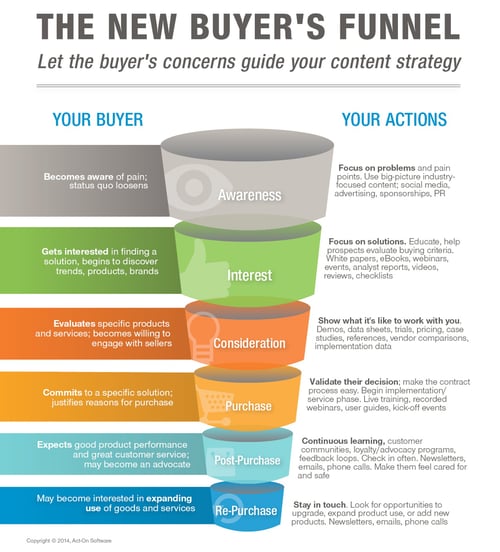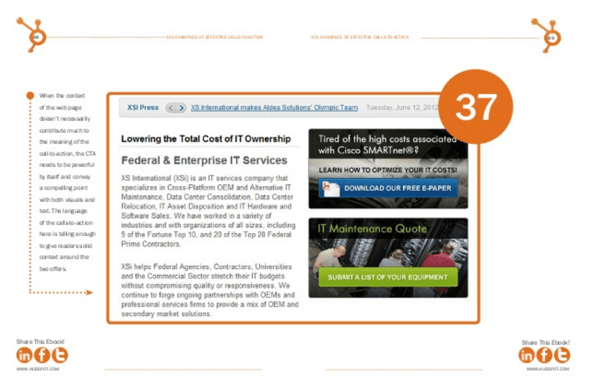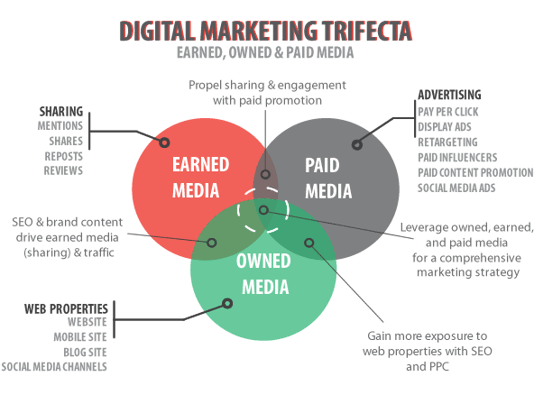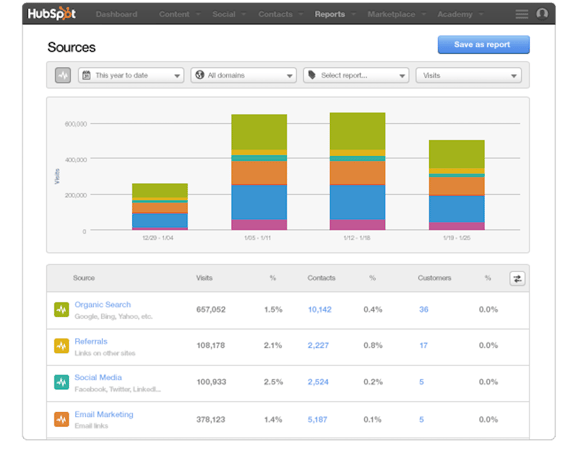“If you fail to plan, you are planning to fail!” No one could have said it better than good ol’ Ben Franklin and nothing holds more true than when creating your SaaS marketing plan. So now that you’re armed with your marketing and sales goals, it’s time to create a content-focused strategy for marketing your product to the masses. Of course, this will take time and proper planning and will even change throughout the course of the year, but including a few crucial components into your strategy from the get-go will go a long way to ensure you stay the proper course.
1. Plan out an inbound content strategy.
Content marketing is one element of a strategic marketing plan that is never going away. For your SaaS marketing to be successful, the inbound way of delivering focused content that answers the right questions for your target audience is key to lead generation. That being said, the first thing to focus on when devising your killer content strategy is your audience. Who are you going to be selling your amazing product to? Do you have clearly defined buyer personas? Do you understand the pains they have at each point of the buyer’s journey? If not, take the time to plan this out with your team so that you can create deliberate, informative and engaging content for the exact people you want to attract.
When your ideal customer is clearly defined, you should then create a goal for publishing content that your team can commit to. Devise a plan of attack, including what types of content will be created, by whom, and how will they be delivered (i.e. blogs, social media, infographics, case studies, video, newsletter). Be sure timelines are put in place and use a content calendar.
2. Focus on providing value.
So you’ve aligned your content marketing efforts to target your buyer personas and are now starting to grow your audience. How do you move them through the funnel? Of course you have a great product, but just writing about your product and all of it’s great features is not going to get your audience converting into leads.
Remember your focus should be on providing value to your prospects. What needs do they have? Do you have an understanding of the questions or concerns they have at each phase of the funnel? Your goal should be to continuously provide a solution to a problem they may have so that they find value, not just in your product, but your company.

3. Provide quality contextual offers.
We’ve all fallen victim to offering free trials and demos at the end of our content, but is that actually helping to drive conversions? Probably not. It’s not likely that someone who visits your site for the first time is going to sign up for a demo. Maybe they are just doing some preliminary research on a pain that they have. At this point they’ll be looking for information on the next step. A contextual offer here may be a guide or checklist, something that will help them better understand how you can help them. Be sure that each piece of content and offer that you provide, naturally guides them to the next phase in the funnel.

4. Utilize various distribution channels.
There are several ways to distribute content to your target audience and three main distribution channels in which to do so: owned, earned and paid. Owned channels are places such as your website, blog, email newsletter and social accounts such as your Facebook Page, LinkedIn company page, Twitter page, and other accounts used to promote your business. Examples of earned distribution channels are guest blog post sites and coverage in mainstream media. These are the most difficult to come by due to guidelines and other’s interest which they are reliant on, but when achieved can significantly increase your reach and engagement. The third channel is paid distribution which can be through Google AdWords, Facebook PPC, and LinkedIn Ads. This channel allows for the greatest potential for optimization as you can target different demographic attributes and get nearly immediate metrics on how your content performed.
Each channel offers a different way to capture the attention of your audience and combining them in your distribution strategy will provide the greatest pay off.

5. Gather the most important data.
It’s not enough to just write and distribute content and hope for conversions. A vital factor in your marketing plan is reviewing the metrics to ensure your meeting those goals you set. You’ll want to see exactly what is and isn’t working so that you can adjust your strategy accordingly. The reporting data you should be looking at is which piece of content has the most reach and engagement, which distribution channels are generating the most contacts or leads, and contacts by conversion type, just to name a few.

Creating a fool-proof, content-focused, SaaS marketing plan takes time and patience, there’s no doubt about that. Yet, when you focus on a few key elements such as creating a clear content strategy, providing value to your prospects, offering great contextual offers, distributing your content through different channels, and analyzing the right metrics, you’ll be planning for success.
Take the next step! Plan out your strategy for creating killer content that helps attract the right prospects. Download our free starter kit below to help get you started today!






![Reignite Your Millennial Marketing Efforts With These [On Fleek] Ideas](https://blog.gorizen.com/hs-fs/hubfs/Podcast/009%20-%20Millennial%20Marketing%20Blog.gif?length=600&name=009%20-%20Millennial%20Marketing%20Blog.gif)


No Comments Yet
Let us know what you think